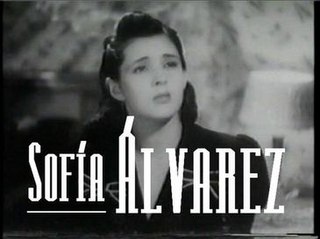
Albuquerque, abbreviated as ABQ, is the most populous city in the U.S. state of New Mexico. Its nicknames, The Duke City and Burque, both reference its 1706 founding by Nuevo México governor Francisco Cuervo y Valdés as La Villa de Alburquerque. Named in honor of the Viceroy of New Spain, the 10th Duke of Alburquerque, the city was an outpost on El Camino Real linking Mexico City to the northernmost territories of New Spain. The 2020 census found the population of the city to be 564,559, making Albuquerque the 32nd-most populous city in the United States and the fourth-largest in the Southwest. It is the principal city of the Albuquerque metropolitan area, which had 916,528 residents as of July 2020.

Los Ranchos de Albuquerque, known locally simply as "Los Ranchos" or "The Village," is a village in Bernalillo County, New Mexico, United States. The population was 6,024 at the 2010 Census. Part of the Albuquerque Metropolitan Statistical Area, Los Ranchos is located on the east side of the Rio Grande, adjacent to the unincorporated North Valley area. Los Ranchos is surrounded on three sides by the larger city of Albuquerque, and its location astride busy transportation routes has been a source of friction with its larger neighbor, as Los Ranchos' efforts to maintain its rural character conflicts with Albuquerque's desire to enhance transportation. Like the North Valley and Corrales, Los Ranchos is an expensive, mostly rural area with widely spaced large houses and dense vegetation.

The Thornton Affair, also known as the Thornton Skirmish, Thornton's Defeat, or Rancho Carricitos was a battle in 1846 between the military forces of the United States and Mexico 20 miles (32 km) west upriver from Zachary Taylor's camp along the Rio Grande. The much larger Mexican force defeated the Americans in the opening of hostilities, and was the primary justification for U.S. President James K. Polk's call to Congress to declare war.

Rio Rancho is the largest and only city in Sandoval County, part of the expansive Albuquerque metropolitan area, in the U.S. state of New Mexico. A small portion of the city extends into northern Bernalillo County.

Roger Creager is an American Texas country music singer and songwriter from Corpus Christi, Texas.

Ixtapaluca is a city and a municipality in the eastern part of the State of Mexico in Mexico. It lies between the Federal District and the western border of the state of Puebla. The name Ixtapaluca means "Where the salt gets wet".

Federico Arturo Guízar Tolentino, known professionally as Tito Guízar, was a Mexican singer and actor. Along with Dolores del Río, Ramón Novarro and Lupe Vélez, as well as José Mojica, Guízar was among the few Mexicans who made history in the early years of Hollywood.

María Esther Fernández González was a Mexican film and television actress. She was one of the first major female stars of the "Golden Age of Mexican cinema" in the 1930s and 1940s.

San Luis Acatlán is one of the 81 municipalities of Guerrero, in south-western Mexico. The municipal seat lies at San Luis Acatlán. The municipality covers an area of 704.4 km².

Xochistlahuaca Municipality is one of the 81 municipalities of Guerrero, in south-western Mexico. The municipal seat lies at Xochistlahuaca. The municipality covers an area of 321.1 km².

Fernando de Fuentes Carrau was a Mexican film director, considered a pioneer in the film industry worldwide. He is perhaps best known for directing the films El prisionero trece, El compadre Mendoza, and Vámonos con Pancho Villa, all part of his Revolution Trilogy on the Mexican Revolution.
Allá en el Rancho Grande is a 1936 Mexican romantic drama film directed by Fernando de Fuentes and starring Tito Guízar and Esther Fernández. The film is considered to be the one that started the Golden Age of Mexican cinema.

Sofía Álvarez Caicedo was a Colombian-Mexican actress and singer. She is best remembered for her work in the Golden Age of Mexican cinema.

The Big Sombrero is a 1949 American Western film directed by Frank McDonald and starring Gene Autry and Champion. Written by Olive Cooper, the film is about a singing cowboy hired as foreman of the Big Sombrero ranch by a man working against the interests of the ranch's absentee owner and workers.
René Cardona was a director, actor, producer, screenwriter, and film editor in the Golden Age of Mexican cinema.
Monte Grande may refer to:
"Allá en el Rancho Grande" is a Mexican song. It was written in the 1920s for a musical theatrical work, but now is most commonly associated with the eponymous 1936 Mexican motion picture Allá en el Rancho Grande, in which it was sung by renowned actor and singer Tito Guízar and with mariachis.
Hernán Rogelio Vera Pavía was a Mexican actor known for usually playing short, small roles, usually as a bartender, during the Golden Age of Mexican cinema.












